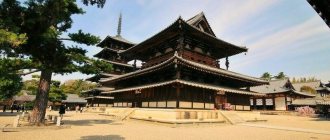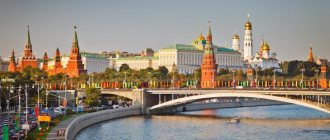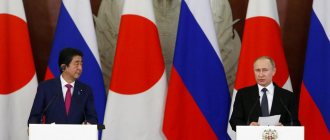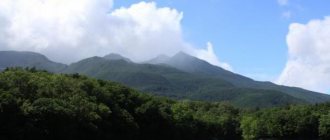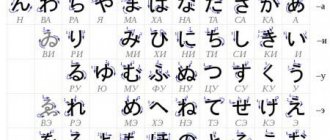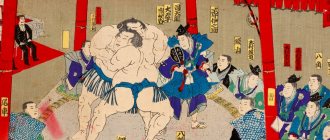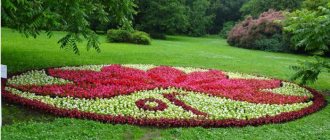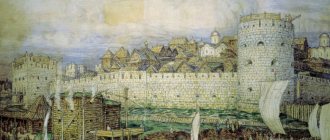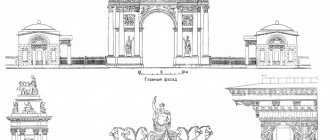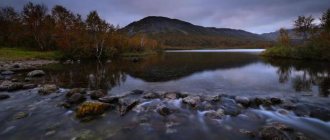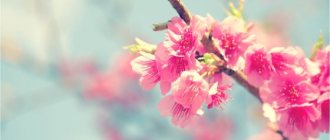Location of the Imperial Palace
The Imperial Palace in Tokyo is located in the Chiyoda district. The official address of the palace is Tokyo, Chiyoda, 1-1. The nearest metro station is Tokyo. The buildings of the palace and the surrounding area are located in the very center of the capital of Japan. Nearby are the Ginza and Kasumigaseki shopping districts. The latter region is where Japan's political life is concentrated.
This is where ministries, police departments, the prosecutor's office and other departments of the country are located. Due to the large concentration of government buildings in the area, the name Kasumigaseki has become synonymous with the word "government".
How to get to the castle
You can get to the Imperial Palace from any part of the city by taxi or by using the metro. There are 3 metro lines to the center of Tokyo.
| Metro line | Drop off station |
| Chiyoda | Nijubashimae |
| Yurakucho | Sakuradamon |
| JR | Tokyo or Yurakucho |
If tourists are staying in one of the many hotels in nearby areas, then it is better to walk to the Imperial Palace. Such a walk will allow you to better get to know the capital of the land of the rising sun. You can enter the territory of the Imperial Palace through 8 gates.
Here are the main entrances:
- The Seimon Gate is the main one. The Niju-bashi bridge leads to them. This entrance is reserved for the Emperor and his family, as well as high-ranking guests.
- Inui-mon.
- Kikyo-mon.
- Sakurada-mon.
Edo Castle
The Imperial Palace (Tokyo, Japan) is built on the site of the 15th century Edo Castle. Edo Castle occupied vast territories at the time when the Tokugawa shogun lived here. He became the founder of the clan of shoguns who, according to tradition, lived in Edo. Each ruler considered it his duty to expand and complete the palace. The residence of the Tokugawa shoguns was the largest in the world in 1637. The outer contour of the castle's defense was 16 km. The inner fortress of Honmaru reliably protected the shogun and his entourage; it was surrounded by a thick stone wall with 11 watchtowers and 20 gates, part of this wall has been preserved to this day. The Ninomaru fortress, intended for the relatives and guests of the shogun, was smaller in size. A magnificent garden was laid out around the residence. After the fall of the Tokugawa dynasty, the castle began to deteriorate, subject to fires and destruction. But a new city was being formed around, which was destined to become the capital. Today, the surviving buildings of Edo Castle and its stone walls are recognized as a national treasure of Japan. The remains of the castle are part of the complex of the current Imperial Palace, built nearby.
History of the origin of the Imperial Castle in Tokyo
The Imperial Palace, like Tokyo, is located on the site of the ancient Edo Castle. These lands belonged to the samurai Dokan. Construction of the castle began in 1456 and was completed a year later. In the 16th century, the castle passed to the commander Tokugawa Ieyasu. He determined the further appearance of the Imperial Castle.
In 1868, after the restoration of imperial power and the transfer of the capital to Tokyo, the castle buildings received the status of an imperial residence. Like other buildings of that time, the palace was made of wood. It has been damaged by fires many times. In 1873, fire completely destroyed the buildings. It took 15 years to restore the complex.
The castle was destroyed for the second time in 1945 during the American bombing of Japan. The restoration of the buildings continued until 1968, although the construction work was completed only in the 90s of the 20th century. This time the buildings were built using reinforced concrete.
History and interesting facts
After 1457, Edo Castle, owned by the samurai Dokan, appeared on the territory. But in the 17th century, this building came into the possession of the shogunates (or rulers of Japan) from the Tokugawa dynasty, whose reign spanned the 17th-19th centuries.
But with the advent of modern times, a civil war broke out on the islands. As a result, the shogunates were overthrown and direct imperial rule was restored to the people of Japan. At the same time, this city was proclaimed the capital of the state. The castle, which belonged to the shoguns, became the residence of the reigning monarchs.
For more than a century and a half, it had to be restored more than once:
- a few years after the restoration of the monarchy, the castle burned to the ground, and restoration took more than a decade;
- at the end of the 19th century, a lightning strike destroyed the high palace tower;
- At the end of World War II, the palace complex was almost completely destroyed by Allied planes.
The Japanese tradition involves the construction of wooden buildings. This material was also used in construction. But due to numerous fires and destruction, after the end of World War II, the authorities decided to use reinforced concrete to restore the complex. As a result, after a large-scale restoration, several buildings appeared on the site of one castle, interconnected by gallery rooms.
Reconstruction of the complex
The wooden buildings of the Imperial Castle were constantly rebuilt. The reason for this was rotting of the supporting pillars of the structures. The first large-scale restoration was organized by Ieyasu Tokugawa in 1593. Old ditches were filled up and new ones were laid, new 12-meter walls were made, and 20-meter ramparts were poured. Existing buildings were also renovated and new ones were built.
In 1873, after another fire, a new building was built on the site of the burnt palace, called Meiji Palace. It consists of 36 buildings, united into one by covered walkways.
The imperial palace took on its modern appearance after the Construction Committee made a decision to erect a new building on the site of one destroyed during the Second World War. The emperor's personal chambers and the official palace were built separately. Construction was completed in 1968.
Reconstruction of buildings continues now. Here, not only the palace itself is being restored, but also a historical architectural park is being created.
History of the palace
In the fifteenth century, Edo Castle was a small settlement at the confluence of three rivers, on the shores of a sea bay. Edo translates to "Gateway to the Bay." At the end of the 16th century, Ieyasu Tokugawa established Edo as a political and administrative center, which over time became more important than the imperial capital. At the same time, he began a major reconstruction of the castle. Construction of the castle lasted from 1593 to 1636.
It was a large-scale event in which more than 300,000 people took part. Daimyo (military feudal lords of Japan in the Middle Ages) provided construction materials, mainly delivering granite stones, and those who did not have the financial means took part in the work, dug ditches, strengthened embankments, and made dams. After construction was completed, the castle was a grandiose structure with 38 gates, 20-meter ramparts and 12-meter outer walls. The main tower of the castle was considered the tallest in Japan, its height was 51 meters.
The construction of Edo Castle is one of the greatest feats of engineering in Japanese history.
Even what remains of Edo Castle today testifies to the thoroughness with which it was built.
stone foundation of the main tower
In 1868, the court of Emperor Meiji (reign from 02/03/1867 to 07/30/1912) settled in the shogun castle. In 1873, the castle burned down and on the ruins of the holy of holies of Edo Castle, surrounded by trees and picturesque gardens, already in 1888 a new palace was built for the imperial family, called Meiji Palace.
The castle moats, walls, guard houses, as well as the base of the tower, which is above in the photo, all this remains from Edo Castle.
In May 1945, Meiji Palace burned down as a result of American air raids. It was only in 1959 that a decision was made to build a new imperial palace on the site of the one that burned down. Construction was completed in 1968.
The Imperial Palace is literally home to the Emperor of Japan and his consort. Diplomatic meetings are also held here regularly. On certain days the doors of the palace are open to the public.
Architect and architecture of the palace
The architecture of the buildings combines traditional features of Japanese buildings and European echoes. In 1964 – 1968 the architect for the construction of the palace buildings after the bombing was D. Yoshimura.
According to his design, a building was built for holding official receptions.
https://www.youtube.com/watch?v=UZ1Zd264UxI
What can you see on the territory of the complex
On the territory of the palace there are remains of fortified defensive buildings. Also of interest is the foundation of what was once the tallest tower in Japan. It is made of tightly fitted granite blocks.
Now there is an observation deck here. Of the surviving structures, the Banse Gate attracts attention. This used to be the main entrance to the residence. The emperor's guests were searched here.
Since 1659, the three-story Fujimiyagura Tower has been preserved in the park. During the excursion, she is shown first. It was brought here from Fushimi Castle during the reign of the shogunate. Walking along Kyodentotei Square to the Nijubashi Bridge on the left side you can see this tower.
The castle of the shoguns is also preserved here. It is built according to the classical architectural rules of Japan. Recently, ancient buildings from all over the country have begun to be brought here to create an architectural park.
On the territory of the Imperial Palace there is a museum of Japanese relics. It will house approximately 10,000 valuable exhibits of art and religion. Residents of the capital and the whole country treat the sacred necklace located in the museum with special warmth.
According to legend, it belonged to the goddess Amaterasu, from whom the imperial family of Japan originated. Even the emperor himself wears a copy of this decoration at religious events. The palace itself is an example of Japanese architecture. During cherry blossoms the park becomes very beautiful.
Don't miss the most popular article in the section: Kamchatka on the map of Russia. What makes the peninsula unique, interesting facts, geography.
Lands and gardens
Despite the fact that for most of the year there are no restrictions on public access, visitors can still explore the parks and gardens for free and without registration. The territory is divided into three main parts:
- Eastern gardens,
- Kitanomaru Park,
- Imperial Palace Gardens
All are surrounded by great trails for morning runs.
• Eastern gardens. Opened to the public in 1968. They are hidden in the deepest tiers of Edo Castle: Honmaru and Ninomaru. The first was a complex where they spent their days, and the second served for meetings with feudal lords. These two areas, combined into a single ensemble, formed the Edo Garden, preserved in Japan, full of the main seasonal flowers and trees. Honmaru is a vast area covered with lawn, while Ninomaru is a well-kept garden, creating a huge space for relaxation.
The gardens also contain some remains of Edo Castle, including the moat wall, entrance gate, and guard houses. On the lawns of Honmaru you can see the imposing foundations of the former castle tower, which was the tallest tower in Japan. Unfortunately, it only stood for 19 years and was destroyed by fire in 1657 and was never rebuilt.
• Imperial Palace. It first opened to the public in 1949, and until then was considered part of the palace grounds and a feature of the Niyubashi Bridge. The bridge got its name because it was originally built of wood, after which another level was added, and then called the “double bridge.” The area was known as Nishinomarushita, where houses for employees were built.
As well as the famous Nijubashi, you can see the Sakuradamon Gate, a cultural asset, and a bronze statue of Kusunogi Masashige. Hardly explained, the name Imperial Garden is usually reserved for the section of gardens in front of the palace, and is occasionally used to refer to the entire garden complex including the parks. Don't get confused about this.
• Kitanomaru Park. A true green oasis, Kitanomaru Park was a medicinal garden, almost entirely surrounded by a moat, giving a sense of escapism (away from all the people). There are two gates at the entrance: Shimizu Gate, which leads to the Chiyoda City District Headquarters, and Taiyasumon Gate, which leads to Kudanshita Station, built in 1685. The park was first shown to the public in 1969 to celebrate Emperor Showa's 60th birthday. The park is a mixture of flowers and wooded areas. It is ideal for relaxing in the shade.
You can walk along the Chidorigafuchi walking trail, which includes a moat lined with cherry blossoms. Mainly in the spring without the risk of being trampled by runners.
From April to November, it is possible to rent a boat with oars and ride along the moat, which looks especially attractive and enchanting when it is surrounded on both sides by cherry blossom trees.
Thanks to them, a rather picturesque picture is obtained not only for swimmers, but also for idle onlookers. The park houses a science museum, Nippon Budokan, and the National Museum of Modern Art.
Palace buildings
The Imperial Palace is divided into 2 parts - eastern and western. They are separated by a moat with water, and are connected by 2 bridges: Nijubashi and Meganebashi. These are the most famous bridges in the capital of Japan.
The inner palace itself, which is closed to the public, includes:
- The palace itself.
- The Great Imperial Laboratory.
- 3 sanctuaries.
- Palace Museum.
- Concert hall.
- Archive of Japan.
The palace consists of several halls, interconnected and united into a rectangle.
Each room has its own name and purpose:
- Imperial Cabinet - This is where the emperor deals with government affairs.
- The throne room is divided into the Pine, Bamboo and Plum rooms. Ceremonies are held here.
- The harvest hall is used for meals.
- The Spring and Autumn Hall is intended for evening receptions.
- The Harmony Hall is reserved for the relaxation of the emperor and his family.
The palace is not only built in traditional Japanese style, but all the decorations in it are made according to traditions.
However, don't expect the palace to look like a typical medieval Japanese castle with white walls and curved roofs. Although the structure does not go against the canons of Japanese construction, now it looks like a simple reinforced concrete building.
My 100 roads
And we remember the Imperial Palace because of the rain. A fine nasty rain hanging in the air, from which it is difficult to hide even under an umbrella, because... Whenever the wind blows, you become wet up to your shoulders. Now we call this kind of rain Dvortsov.
– Fushimi-yagura Tower and Meganebashi Stone Bridge, Tokyo, Japan
part 2 – Tokyo and surroundings
– Day twelve – Walk around Tokyo – Imperial Palace
“The memory of Edo is a breeze from Fuji frozen on a fan.” (Matsuo Basho)
Well, no need to get up early today. By 10 am we will go on an excursion to the Imperial Palace, which we booked while still at home. Today you can get up later and have breakfast slowly. It's raining outside and I don't want to go out.
At the gate to the Palace they were the very first. Almost got it wrong. Early. We decided to find a place where we could wait under the roof. Found a restaurant near the Wadakura Fountain
. True, the fountains did not work. Although, the place is actually nice.
1
– Wadakura Fountain
It's time to go to Kikyo Gate (Kikyo-mon)
on a tour
of the Imperial Palace
.
There they check the “invitation” and, as it were, form language groups. Then we went to a certain Someikan
for visitors, where we were shown a film about the Palace, were given audio tours and were introduced to the rules of conduct.
There were about a hundred people on the excursion. Our walk takes 1 hour 15 minutes. and just over 2 km. I will say that it was possible to do without it. The only bonus was that we walked across the Nijubashi
and got to see the
Fujimi-yagura
a little closer. (
walks around the territory of the Imperial Palace – 80 Kb)
Edo Castle, also known as Chiyoda-jo Castle
, is a plains castle that was built in 1457
by Ota Dokan
in the area that is known in modern Tokyo as Chiyoda, and which was then known as Edo. Tokugawa Ieyasu founded the Tokugawa shogunate on this land, and as the seat of the shogun and the seat of the bakufu (shogunate government), the castle functioned as a military capital during the Edo period of Japanese history. During the Meiji Restoration, the castle became the main residence of the Emperor of Japan, or kokyo. Some moats, walls and ramparts still exist. However, during the Edo period, the area was much more extensive, with Tokyo Station and the Marunouchi city area lying within the outermost moat. The castle grounds also included Kita-no-maru Park, Bodukan Hall and other attractions of modern Tokyo. At that time, the castle and its city were larger than Rome, Europe's largest city (14.6 km sq), and much larger than London (9.2 km sq). Edo took up so much land because the city developed according to a clearly laid out urban plan, which called for moats to extend from the castle in a clockwise spiral, taking advantage of the region's topographical features such as rivers, valleys and hills.The city arose in part because Edo Castle already existed and was the center of life in the area. Tokugawa Ieyasu (1542-1616) established himself in the castle in 1590. The castle was famous for being built by Ota Dokan (1432-1486), and the plan was that Ieyasu would use the castle as the headquarters for his Shogunate in Edo. But when Ieyasu made the castle his residence, it became clear that the castle was in very poor condition. Instead of stone walls, there were only grassy embankments around the castle, and the estate was no better than an ordinary farmhouse. Therefore, a new plan was developed to significantly expand and strengthen the castle.
The first thing they started telling us about on the street was a reinforced concrete building in the neo-classical style built in 1921 ( No. 2 on the diagram
).
Previously, the so-called Privy Council (Sumitsuin)
, and the house itself is considered the prototype of the Japanese Diet building. The building is so-so.
the Fujimi-yagura watchtower
(
No. 3 on the diagram
). Gorgeous! Even in such nasty weather, she looks beautiful. Built in 1657, rebuilt after a great fire in 1659, and then again after a great earthquake in 1923. The three-story watchtower, which is 16 meters high, tends to look equally beautiful from any side, earning it the nickname “Eight-sided fortification.” " It is believed that in winter, in particularly clear weather, Fuji-san can be seen from here. I really don’t know how, because all the windows seem walled up.
2
– Fujimi-yagura Watchtower
Next we came to a rather large square with another building ( No. 6 on the diagram
). It houses the Office of Imperial Household Affairs, which deals with excursions. From 1952 to 1968, the third floor of the building “worked” as a palace.
3
– East Pass Gate
4
– Kikyo Gate (Kikyo-mon)
5
– Imperial Household Administration Building
Then we were taken to the Kyuden Totei Plaza.
in front of the imperial palace itself (
No. 7 on the diagram
).
The part of the palace that overlooks the square is the Chowaden Hall ( No. 8 on the diagram
). Twice a year - on January 2 (on the occasion of the New Year) and December 23 (on the emperor's birthday) - from the balcony of this building, His and Her Majesty, as well as members of the imperial family, greet the assembled subjects.
The palace... maybe it's a kind of Japanese palace in a modern style. This is a long reinforced concrete building consisting of seven wings for different purposes, each of which, in addition to the only above-ground one, has two underground floors. The video that was shown to us before the tour showed the interior of Kyuden - beauty worthy of an emperor. Unfortunately, tourists are not allowed there.
6
– Kyuden Totei Plaza and Palace
7
– Nijubashi Bridge Gate
8
– View of Nijubashi Bridge from Kyuden Totei Plaza, after the gate
When I was looking for information about the Imperial Palace and its history, I discovered an interesting fact - Women's guards. The artist Toyohara Chikanobu (1838-1912) has a series of prints “Ladies of Chieda Palace”. There is an assumption that the three engravings (Women's Guard) depict the great fire in Edo in 1657, which destroyed the Yoshiwara and Asakusa quarters, and also affected Edo Castle itself. How big a disaster it was can be judged by the victims. About 100,000 people died then. The figures in the foreground are dressed in uniforms - the clothes are quite long and, of course, multi-layered.
And finally, the star of this whole excursion, which is actually why we decided to go on it, is the Nijubashi Bridge.
or Double bridge (
No. 9 on the diagram
).
The name comes from the fact that the wooden bridge originally built on this site was not strong enough, and it was strengthened with additional beams. However, the current bridge does not give the impression of being durable. The crowd moves on and he resonates a little. The bridge was reconstructed in 1964. It also has another name - Seimon-tetsubashi (Seimon-tetsubashi)
or
Main Gate Steel Bridge
.
You are not allowed to stop on the bridge, but from it there is a beautiful view of another tower - Fushimi-yagura
. Once upon a time it stood in the Fushimi fortress in Kyoto, but the third shogun Tokugawa Iemitsu (grandson of Ieyasu, we visited his Taiyu-in-byo mausoleum-tomb in Nikko) appreciated it so much for its beauty that he ordered it to be transported to his residence in Edo.
9
– Fushimi-yagura Tower from Nijubashi Bridge
After Nijibashi Bridge
we went back to
Kyuden Totei
.
Then they turned the corner beyond Chowaden
.
In this part of the building there is Homeiden
- the State Banquet Hall, and in the depths behind it are the living quarters of the emperor and his family.
Yamashita Street (Yamashita-dori)
goes down (
No. 11 on the diagram
).
In! On the territory of the Imperial Palace there are streets and its own gas station. A kind of city within a city. Yamashita-dori abuts the lotus pond (Hasuikebori), behind which rises the fortified wall Fujimi-tamon
, separating the Imperial Palace from the Eastern Gardens.
Then the whole crowd returns to Someikan
- the premises for visitors, hand over audio guides, pick up things (storage rooms are paid), run into a souvenir shop where those who wish can purchase a portrait of the Imperial Family and head out.
It is impossible to enter most of the territory of the imperial castle. Even a special tour shows only a negligible part of all the castle buildings.
During the Meiji period, about a century and a half ago, privileged Japanese families could visit this part of the park. They left memories of what buildings can be seen here. The ancient structure of the garden, the ruins of ancient buildings and a “village house” with a stable and farm food have been preserved here, reminding the emperors of both the principles of Zen Buddhism and the life of the common people. There are also three temple-sanctuaries in which the sacred relics of the emperor are kept - Kashikodokoro, Koreiden and Shinden.
Kashikodokoro is the main of the three sanctuaries and is dedicated to the cult of the imperial ancestor. Koreiden is located west of Kashikodokoro and is dedicated to the cult of all imperial ancestors, starting with the first emperor. The third temple, Shinden, is located east of Kashikodokoro and is dedicated to the cult of all other deities.
Three complexly shaped temples in the greenery, not far from the imperial palace, are the imperial sanctuaries. Outsiders do not have access here, so even an external inspection of the buildings is not included in this excursion. But it’s worth talking about them. One of the imperial relics is kept here - pendants made of precious jasper Yasakani no Magatama (shining curved jasper)
, made in the form of curved beads, similar to commas.
According to Shinto lore, the pendants were given by the sun goddess Amaterasu to her divine grandson Ninigi no Mikoto, who in turn gave them to the first emperor of Japan, Jimmo, in 711 BC. e. In these same shrines, according to Shinto beliefs, the spirits of members of the Japanese imperial family live for a year after death.
It is interesting that there are three sacred symbols of imperial power - jasper, mirror and sword. However, the sword sank in 1185 during the battle of the Taira and Minamoto clans for the imperial throne, and the mirror was badly damaged by three fires. So much so that they say only ashes remain from him, which are stored in a special box. And only the jasper remained in its original form. True, at the same time it is never obtained and no one knows exactly what it looks like. Replicas of sacred objects have been used in all ceremonies for over 500 years.
Copies of sacred symbols are also surrounded by their history, reverence and are considered equal to the ancient ones. A reproduced copy of the Yatano Kagami sacred mirror is located in the main imperial shrine - Kashikodokoro, which literally translates as “a place that inspires awe.”
It was at the Kashikodokoro Ceremonial Temple that Crown Prince Naruhito married Masako Owada in 1993. The other two shrines, Koreiden and Shinden, are dedicated to the memory of previous emperors.
By the way, at first the part of the castle where the emperor’s private residence is located was just a park of wild flowers. At the end of the 17th century, tea houses were built here, a lake and a double waterfall were created, several temples, the emperor’s summer house and other structures were erected. The garden was named Fukiyage
, or
Kin-En
. It burned down several times, and although it was completely restored, the final reconstruction has not been completed to this day.
Outside the Imperial Palace, we take a couple of popular shots with the Fushimi-yagura tower and the Meganebashi stone bridge.
or
Bridge-Glasses
.
10
– Fragments of the Meganebashi stone bridge
Well, as a logical conclusion to the excursion around the territory of the Imperial Palace, we went to the building of the Tokyo International Forum
. Because there …
To be continued.
Part 1 – South-West
Part 2 –
Tokyo and the surrounding area
– chapter 1 – Evening in Tokyo 1 – Asakusa page: – chapter 2 – Kamakura 1 – Daibutsu – chapter 3 – A walk through Tokyo page: – chapter 4 – Hakone 1 – Kuzuryu Temple page: – chapter 5 – Hakone 2 – Wedding page: – chapter 6 – Hakone 3 – Tokaido – chapter 7 – Hakone 4 – Owakudani – chapter 8 – Evening in Tokyo 2 – Akihabara – chapter 9 – Nikko 1 – Shinkyo Bridge – chapter 10 – Nikko 2 – Rinno-ji Temple – chapter 11 – Nikko 3 – Toshogu Shrine page: – chapter 12 – Nikko 4 – Taiyu-in-byo Temple page: - Chapter 13 - Nikko 5 - Futarasan Temple and Jizo Alley - Chapter 14 - Kamakura 2 - Engaku-ji Temple page : – chapter 15 – Kamakura 3 – Tokei-ji Temple – chapter 16 – Kamakura 4 – Hase-dera Temple page: – chapter 17 – Kamakura 5 – Tsurugaoka Hachiman Shrine – chapter 18 – Evening in Tokyo 3 - Roppongi - Chapter 19 - A Walk in Tokyo - Imperial Palace - Chapter 20 - A Walk in Tokyo - Tokyo International Forum - Chapter 21 - A Walk in Tokyo - Akihabara - Chapter 22 - A Walk in Tokyo - Zojo-ji Temple ( Zojo-Ji Temple - Chapter 23 - Evening in Tokyo 4 - Tokyo Tower and Shinjuku - Chapter 24 - Road to Matsumoto - Chapter 25 - Matsumoto Castle Part 3 - The
Soul of Japan
Eastern Gardens
This is the only area of the Imperial Palace that is open to tourists. It became possible to visit the castle gardens only in 1968. You can walk here from 9-00 to 15-00 on Tuesday, Wednesday, Saturday, Sunday. The park is also open during national holidays.
This is a classic Japanese garden. It features trees from every prefecture in the country. In total there are about 300 different species of trees and shrubs. It is most beautiful here in spring, when hydrangeas and azaleas bloom.
On the territory of the Eastern Gardens, the garden located in the second fortress in 1603 was restored. These plantings were done by the gardener Kobori Enshu, the founder of the Japanese style of landscape design.
Not far from the emperor's residence is the Chidorigafuchi moat. To get to its surroundings you need to get to Kudanshita station. The ditch is deep enough. There are many cherry trees growing along the banks.
During flowering, the branches droop close to the water, and the fallen petals turn the water pink. In the evening, the trees are illuminated, which makes this place fabulous. You can rent a boat and admire not only the sakura flowers, but also their reflection in the water. Chidorigafuchi Moat is considered the best place to admire the blossoming of Japan's national tree.
What to see?
Due to the fact that most of the grounds of the Imperial Palace in Tokyo are closed to visitors throughout the year, a limited part of the architectural structure can be viewed here on normal days. The capital complex is interesting because the area is surrounded by greenery, which is uncharacteristic of the rest of the city.
On ordinary days, during a walk, it is worth visiting the Eastern Gardens, which partially offer views of the bridge and other structures. The Tokyo ensemble will be interesting in winter, when the sakura blossoms.
Eastern Gardens of the Imperial Palace
Fishimi-yagura Watchtower
"Double Bridge" Nijubashi
Eastern Gardens of the Imperial Palace
The Eastern Gardens are one of the few parts that are open to the public year-round. Moreover, earlier the defense circles of Edo Castle were located here. The only fortification structure that has survived to this day and was previously a large tower, today looks like a wide platform.
In another part of the Eastern Gardens there are maple trees, which are especially beautiful in the fall when the leaves turn bright red or yellow. Along the artificial reservoir, also organized on the territory of former fortifications, there is a garden with irises. You can see carp in the muddy water of the pond.
A little to the side of the iris garden there is a tea house, which serves a decorative function. On the territory of the Eastern Gardens there are mainly trees native to Japan. This part, despite the abundance of visitors, stands out from the rest of the city with its expressive cleanliness.
Banse Guard Gate
The guard gate is one of the few buildings built several centuries ago. Previously, guards were stationed here to inspect visitors wishing to have an audience with the ruler of Japan.
Fishimi-yagura Watchtower
The three-level watchtower is designed in traditional Japanese style, with curved roofs, and stands on a dark stone fortress wall. The walls of the structure are bright white. The tower first appeared in this place in the second half of the 17th century. Over the following centuries, Fishimi-yagura was rebuilt and repaired several times.
This tower is considered the most beautiful structure. Fishimi-yagura, thanks to special architectural solutions, is well protected on all sides, and seems to float above neighboring buildings and trees.
"Double Bridge" Nijubashi
Nijubashi is a double-arch bridge made of metal. The structure was erected in 1888 and serves as the main entrance to the territory. This bridge stands out due to its openwork lattice and decorative lanterns. From Nijubashi there is a view of the Fishimi-yagura watchtower and a number of other buildings of the Tokyo architectural ensemble.
Hanzo Gate
Ancient pagoda
Imperial Laboratory and Sanctuaries
There are three sanctuaries on the territory:
- in the first rest the souls of the deities of Heaven and Earth, the guardians of the palace;
- in the second the souls of past emperors rest;
- the third contains a divine mirror, which is the personification of the goddess Amaterasu and one of the main relics of Japanese rulers.
- To the side of the three shrines is the emperor's laboratory.
"Peach Orchard Music Hall"
This hall was built in the 60s of the last century, in honor of the emperor's wife. Concerts are regularly held here for the family of the rulers of Japan with the participation of both local and famous composers. However, more often small national groups perform here. The hall hosts events to which ordinary people are also allowed.
Ancient pagoda
The ancient pagoda is a remnant of the shogun's palace, built before the restoration of power. The structure was built in classic Japanese style, with curving roofs and protruding wooden canopies.
Days to visit the Imperial Palace
The territory of the palace itself is closed to visitors. Guided tours take place in the Inner Gardens. Only 2 times a year you can get into the inner garden of the Imperial Palace. It is January 2 and the emperor's birthday. These days, the emperor and his family go out onto a special glass balcony to greet residents of the country and tourists.
Tours inside the Imperial Palace in Tokyo are prohibited!
The gardens surrounding the castle can be visited any day from 9:00 to 17:00 in the summer, from November to February from 9:00 to 16:00, and in September, October and March you can go to the park until 16:30.
Application
It is unlikely that in the capital of Japan there is another place so clearly visible and at the same time so closed as the Tokyo residence of His Majesty the Japanese Emperor - the Imperial Palace, or in Japanese Kokyo. And it is unlikely that any other Tokyo attraction of a similar rank can evoke such a contradictory range of impressions in visitors: from deep awe to strong disappointment.
Judge for yourself: on the one hand, the territory of the imperial palace, which forms the very geographical center of the city, is the most noticeable place in the Japanese capital, inspiring respect by the sheer size of its vast territory, which, together with gardens and parks, amounts to more than three hectares. On the other hand, perhaps the main feeling that arises in a person who arrives for the first time and is overwhelmed by the desire to see the notorious palace is complete bewilderment: where is the palace? There is a huge territory surrounded by powerful fortress walls and a long water moat, but the palace itself is somehow not visible. Maybe the guides are on to something? And for some reason they distract the attention of discouraged tourists with long stories about the glorious pages of history? From them, everyone can easily find out that for almost three hundred years throughout the Tokugawa era, the most powerful castle in Japan stood on this site with 20 gates and 16 towers, one of which, 51 m high, was listed as its time and the tallest building in Japan.
However, to see the palace-castle in its former glorious splendor is now possible only thanks to a developed imagination, and on the ancient Edo-zu scrolls stored in museums. But in reality, once you are at the walls of the palace, no matter how much you look around, at best, only neat pine trees on immaculate green lawns, a fortress wall and a stone moat are in sight. Therefore, the Fujimi-Yagura watchtower at the “Chrysanthemum Gate”, where outsiders are strictly prohibited, becomes the main photographic symbol of the imperial palace for confused tourists. Moreover, in the field of view of the tourist there will be two bridges with confusing names: Nijubashi (aka Tetsu no seimon-bashi) and Megane-bashi (aka Ishi no seimon-bashi) leading to the same place - where outsiders are prohibited from entering. Moreover, the tourist’s attention will be attracted only by two bridges with confusing names: Nijubashi (aka Tetsu no seimon-bashi) and Megane-bashi (aka Ishi no seimon-bashi, leading to the same place - where outsiders are prohibited from entering. “Where is it?” palace?" - puzzled tourists legitimately ask, standing on tiptoe and trying to peer beyond the fortress wall. But, having not seen anything similar to its outline, most of them, wandering around the fortress walls, leave in bewilderment. At least, Personally, when I came to Kokyo for the first time many years ago, I experienced precisely these feelings.And a lot of time passed before I finally managed to come closer to understanding his secret.
As a consolation, guides usually tell you that you can enter the palace territory to see the direct descendant of the sun goddess Amaterasu only twice a year - on December 23 and January 2. Moreover, the first date is variable, since it depends on the birthday of the current emperor, and the second is constant, since it is associated with the celebration of the New Year celebrations. In fact, those who want to wander through some of the imperial parks without the guaranteed sight of His Majesty still have a chance. This can be done on certain days and times of the week almost all year round. The walk will take a lot of time, because the route is quite long. But you still won’t see the palace itself on your way. But in the spring you will admire the best cherry blossoms in Tokyo at Kitanomaru Park. And at any other time of the year, enjoy the impeccable tranquility of the Eastern Gardens, from where, if you look in the right direction, you can still notice a small piece of the roof of one of its buildings.
However, the most persistent ones still have a way to see the imperial palace. For this purpose, you need to submit an application to the Administration of the Imperial Palace, which deals with excursions, and, having previously agreed on the date and time, appear with your passport at the designated place - “Chrysanthemum Gate” or Kikyo-mon. Then, as part of a large joint group of foreign and Japanese tourists, armed with an audio guide in the appropriate language, you can take a walk lasting more than an hour into the inner sanctum of the palace complex - the territory of the Inner Gardens. And there the Imperial Palace will appear before your curious gaze in all its glory. Namely, in the form of one of its seven ceremonial buildings - the Chowaden reception hall, from the windows of which, on two rare occasions a year, members of the Japanese family greet the public. However, it is unlikely that what they see will fully reward the enthusiasm of the most persistent. For it is difficult for non-Japanese, and especially Russian consciousness, spoiled by ideas about the obligatory attributes of the luxury of supreme power, to understand that a modest long reinforced concrete building, similar to a hangar, is the habitat of a representative of the most ancient imperial dynasty on Earth. “What, this is him?!” - the already discouraged tourist thinks once again, intensely peering into the concrete one-story building and, at the same time, disappointedly parting with the colorful picture of the picturesque castle, which, under the guise of the Imperial Palace in Tokyo, was offered to him by the website of the travel company. Yes, since the 60s of the last century, the residence of the Japanese emperor and his family, having survived many destructions and fires, finally lost the appearance of not only an impressive medieval castle, but also any splendor and splendor in general. And no matter how difficult it is to realize, it is exactly what it is - a long, rather boring reinforced concrete one-story building, consisting of seven buildings arranged in an intricate way. (Apparently, some travel agencies that lure inexperienced tourists to Japan find it difficult to come to terms with this. I saw with my own eyes how on various travel sites, for the Imperial Palace in Tokyo, photographs were given out to choose from, representing views from various castles in Japan to the buildings of the territory of the Forbidden City in Beijing.)
In the film, which is shown to tourists before the start of the organized excursion, there are shots of the inner chambers of the palace, which goes two more floors underground, the interiors of which are much more consistent with the usual European ideas about the degree of beauty and wealth worthy of an emperor. But the entrance there is completely closed for curious tourists.
And yet, to the question whether it is or is not worth going on an excursion to the imperial palace, or, more precisely, to its walls, I would answer positively. Because in this whole story with its location, appearance and accompanying paraphernalia, there is something deeply Japanese, something very characteristic of the psychology of the inhabitants of the Land of the Rising Sun. After all, the presence of the Symbol of the nation and the main custodian of the sacred traditions of the divine ancestors should not be obvious. It should be tangible, obvious, but invisible. Everything is just like that…
photo: pixta (iLand), Roman Afanasyev
Tours of the palace
The Imperial Palace in Tokyo can be visited any day except Monday and Friday.
Since the Imperial Palace is the active residence of the emperor and official events are held here, the castle grounds are closed during their holding.
The Palace Administration is responsible for conducting excursions. They review applications, form groups and allocate a guide. The tour lasts approximately one and a half hours. During this time you have to walk 2 km. While visiting the palace, you must not lag behind the group or deviate from the route.
However, you will not have the opportunity to explore the palace itself. The tour is built around the castle and passes by architectural historical buildings and the ruins of the former palace.
Useful information for tourists, rules for staying on the territory of the complex
The Tokyo Imperial Palace can only be visited after submitting an application on the official website.
- Register on the website of the Imperial Palace Administration.
- Select a date for your visit.
- Make a request.
- Wait for an official response to your application.
- Print your visit permit.
- Go to Japan and on the chosen day enjoy the beauty of the Eastern Garden and Palace.
Please note that excursions start at 10:00 and 13:30. Tours are available in Japanese and English.
When visiting the Tokyo Palace, you should remember the rules of behavior in Japan. So, when addressing a Japanese resident with a request, you must bow. You need to pay attention to things that are common to Westerners, such as talking on the phone, snacking on the go, or loud sneezing. All this is not accepted in Japan and will attract the disapproving attention of the capital’s residents to the tourist.
It is not customary to be late in the land of the rising sun, so it is better to arrive early for the start of the excursion.
Story
The current palace stands on the grounds of Edo Castle. Before this, it served as the residence of the Edo warrior Shigetsugu. The land was close to Hibiya, which was then a beach, a flat area fortified by ditches. Built in 1457 by Ota Dokan, Edo (also known as Chiyoda Castle) was considered an important location in the development of Japan. During the Siege of Shiego Edo, it was captured by the Hoyo clan and later abandoned during the Siege of Odawara in 1590. The castle later became a formed base for Tokugawa Ieyasu and the Tokugawa Shogunate. At the same time, it was made a military capital.
Following the Meiji Restoration, the castle became the Imperial Palace, and Emperor Meiji sat there until the construction of a new palace. Unfortunately, the fate of many ancient Japanese buildings is disappointing. Almost nothing remains of the castle or historical buildings due to fires, earthquakes, and war damage – although a few small areas have survived.
A visit to the palace and its gardens is included in the program of individual and group tours to Japan and can be called mandatory for tourists who come to Tokyo (especially during the cherry blossom season).
Hotels near Tokyo Imperial Palace
The Imperial Palace in Tokyo, located in the very center of the capital, is adjacent to the Ginza district. This is the most elite area of the city. This is where expensive shops, restaurants, hotels and administrative buildings are located.
You can stay in the area at one of the following hotels:
- Sotetsu Fresa Inn Ginza Sanchome decorated in a Japanese theme. This 3-star hotel offers air-conditioned rooms, Asian cuisine and in-room amenities. The cost per room for one person in this hotel starts from 7,500 rubles.
- This area is home to the most unusual hotel in the world - The Prime Pod GINZA TOKYO . Price for 1 capsule – 3300 rub. This price includes Wi-Fi, safe, TV, bedding. The hotel has a coffee shop and bar.
- Hotel Gracery Ginza offers rooms from 11,000 rubles. The price includes the room itself with a work desk, breakfast, and Internet connection. The hotel has a massage room.
- Toshi Center Hotel is a 10-minute walk from Tokyo Palace. Here you can stay in a European room or in an apartment with traditional Japanese beds - futons. Room rates start from 3,000 rubles.
- Super Hotel Premier Tokyo Station Yaesu-Chuoguchi is located in Chuo Ward, 4 km away. from the city center. The cost of placement is from 9500 rubles. Finding the hotel is easy - it is located on the corner of Chuo-ku Yaesu 2-2-7, a 5-minute walk from JR Tokyo Station. What distinguishes it from other hotels is 2 hot pools available 24 hours a day.
- Between the Ginza area and the Imperial Palace is a small, little-known area called Marunouchi. Tosei Hotel Cocone Kanda is located here . A room costs from 6,000 rubles.
- A little further from the central attraction is the Akihabaru district. Prices in hotels in this area start from 6,400 rubles. For example, here you can stay at A PA Hotel Asakusabashi-Ekikita, remm Akihabara, HOTEL MYSTAYS Asakusabashi.
When traveling to Japan, you should definitely visit the capital of this country and visit the pearl of Tokyo - the Imperial Palace with its magnificent buildings and well-kept gardens. Getting to know the pearl of Japan will create the foundation for further exploration of this interesting country.
Author: Svetlana Mokeeva
Article design: Mila Friedan
